Inside The Habitat there is a painting of an oak tree that hangs behind dozens of guitars, keyboards, and mic stands. It is a pacific image amidst an array of instruments, each with a different potential and province. It is also a symbol of accomplishment—considering the wall in the house of which it hangs, and the creative endeavor that has sprouted from seeds sown long ago, having grown just as tall and broad as the depicted oak.
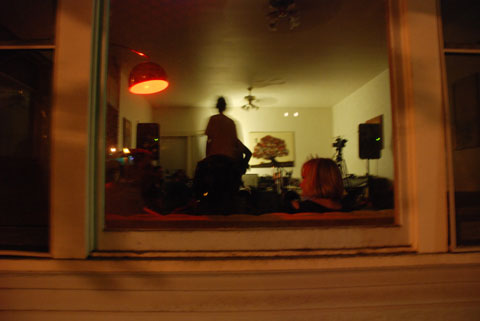
The Habitat, in all of its stature, is a recording studio that presents small shows about twice a month. Physically, it is a one-story arts-and-crafts home, situated on an inclined street in Golden Hill. However, perhaps more accurately, The Habitat is Roy Silverstein.
But Silverstein would be the last to take credit for what has burgeoned into one of the finest places to enjoy music in San Diego. “I don’t make a schtick about putting it on,” he laughs, “but yeah, it’s me. For money I work as an electrical engineer at Qualcomm. For fun, I work here.”
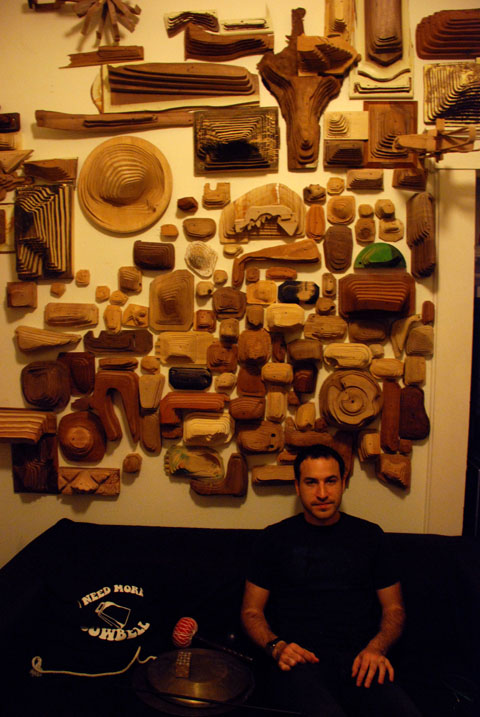
Silverstein first started recording back in Evanston, Illinois, a suburb north of Chicago. He was in high school and playing music with his pals in an alternative rock band called The Technicolor Pink. They were playing together for around a year before ever laying down their tunes. “We recorded on a 4-track,” Silverstein remembers, “that’s where I got the recording bug, knowing that we could make a little record and give it away to friends on these crappy tapes. It was great.”
From there, he dabbled in recording for his own bands over the years, including The Boyish Charms with whom he currently plays drums. But it wasn’t until around 2006 when he started to record seriously for Red Pony Clock's first album "God Made Dirt". Now, a few years and a number of projects later, to take a look around The Habitat’s recording abode is an impressive tour of equipment—especially considering its status as a labor of love.
The following conversation took place, appropriately enough, in the same living room that has hosted its share of folks singers and western crooners, modern dancers and even the occasional electric hip-hoppers.
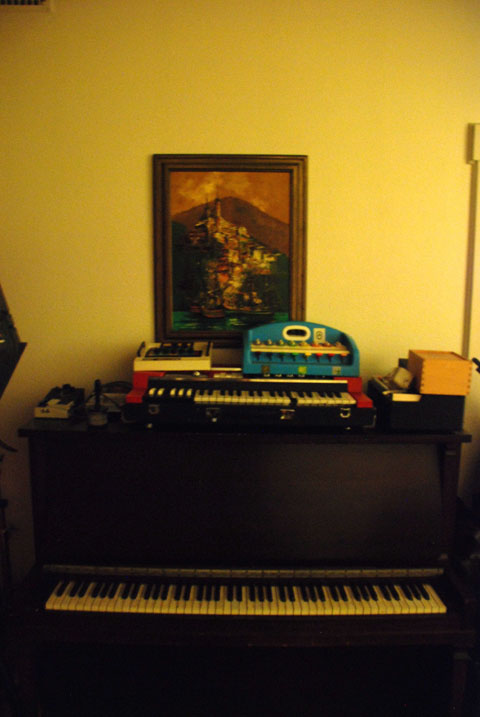
Sezio: First things first. What’s the story behind all of this? How did The Habitat become a home-show venue?
RS: In high school, my friend Max Alper decided to form a theater/sketch comedy troop called ‘Theatre of the Awkward.’ I got involved and we would do these shows in his parents’ living room. We’d perform the skits and then there’d be a musical group. It was totally Kids in the Hall, or in Chicago there were the Neo Futurists. That’s how the house-show thing got started. We would put on shows in people’s homes. That experience was definitely something I took with me, so when I had this space here, it was definitely something I wanted to do. And it works well here because Golden Hill has become the Mecca for a lot of artists in San Diego.
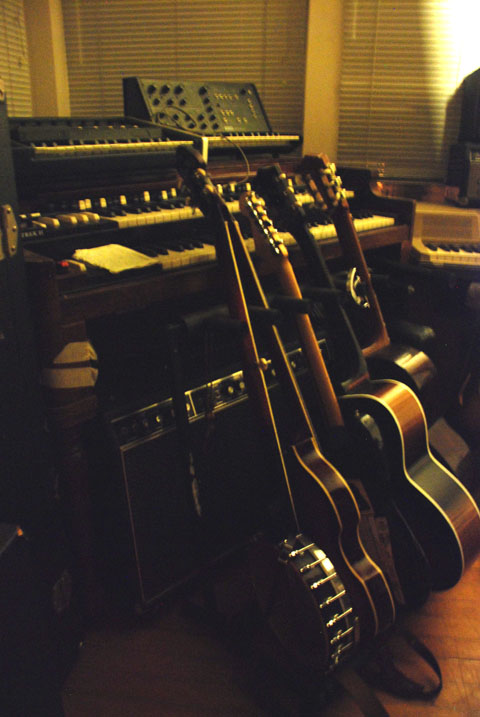
Sezio: How does environment play a role in what you do here?
RS: Intimacy is a big factor here. I try and create an environment that’s inviting. The shows tend to be more on the mellow side because the space fits that vibe.
Usually you are at a bar or it is sit-down, or formal. But here, you’re coming into somebody’s living room, somebody’s house. It is way more intimate with the music, with the performer. It’s a totally different environment. You’re not at a bar; you’re in a neighborhood. The aspect of commerce is totally taken out. We’re not trying to make any money. Sure the bands can, they sell their merch and and cds, but the focus of the shows here is to hear the music. People come to The Habitat to see music. I don’t structure it to be a party; I tailor the time to be around 8-10 p.m. so the neighbors aren’t put-out.
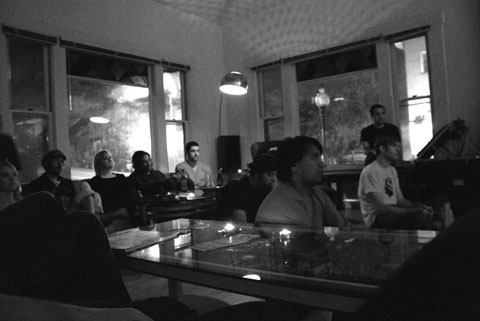
Sezio: What was the original vision for The Habitat and how does that compare to the realization?
RS: The original idea was simply to have a place to play and modestly record music for myself. That has evolved into a pretty nice home studio with some really high-end gear, the expansion of recording not just my own music but that of others, and hosting shows on a regular basis. It has really become a labor of love for me. I do the shows for free and the recording for almost nothing. I think The Habitat has become something of a landmark here in Golden Hill as a place for local and touring bands to play to a captive audience in a very intimate setting. I'm seeing most of the bands that play here for the first time, so I assume that's the case for others too. It’s hopefully become an outlet for people to discover new music and for bands to find new fans and springboard from.

Sezio: You never see The Habitat in the papers—rarely at best. How do you organize and promote shows?
RS: Almost all through word of mouth. I have a lot of bands contacting me, they think it’s a great place and they want to play here. I discourage bands to list their show here in the newspaper or radio because I don’t want it to get too big. It gets stressful. We’re not going overboard here. It’s my house. It’s comfortable at around 20-30 [people].
Sezio: Who are you currently working with nowadays?
RS: I recently tracked some jams with Seesaw Ensemble with guest saxophonist/flutist/poet, Elliot Levin (to be released on Porter records). I’m finishing up a new EP with Boyish Charms, sporadically working on albums for Snoozer (aka Susie Gharemani) and Katy Davidson (ex Dear Nora), slowly tracking stuff for my talented girlfriend (The Unusual Bird), and I might be doing more Red Pony Clock stuff soon. Derek Papa expressed interest in doing some stuff this winter as well. So my plate is pretty full!

Sezio: What's next for the Habitat? Change of vision? Do you consider expansion, continuation, etc?
RS: Because The Habitat is confined to a rental property in a residential area, there are limits to what I can do here. My main objective for the near future is to continue hosting shows and recording on a regular basis. I think there's something to be said for consistency as a goal and for sticking to what you know best. In America it seems like there is always this urge to expand and grow and do this and do that. Bigger, better, faster, stronger. I’d like to keep The Habitat basically how it is. If 100 people start coming to every show it’s gonna die. House-show venues come and go mainly due to drawing too much attention to themselves. If you want to survive in this underground market of live music, you have to remain small and stealthy. And never charge admission or sell alcohol because that’s a ticket to the police paying you a surprise visit one day.
Now, the sad news is, all things must die. In a couple years, I probably will be leaving to fulfill the American Dream of owning a house. I don’t imagine that I will be continuing the house shows in the new place, but I definitely will be keeping up and expanding the recording studio portion. This area is brimming with creative folks and I hope to do my part in documenting their visions. So my future vision for The Habitat is to basically bring forth my friends’ and neighbors’ musical visions. And hey, maybe someone will keep doing shows in the old space. You never know.
Until then, you can visit the Habitat's website
--Jordan Anne Karnes
Photos by Joel P West